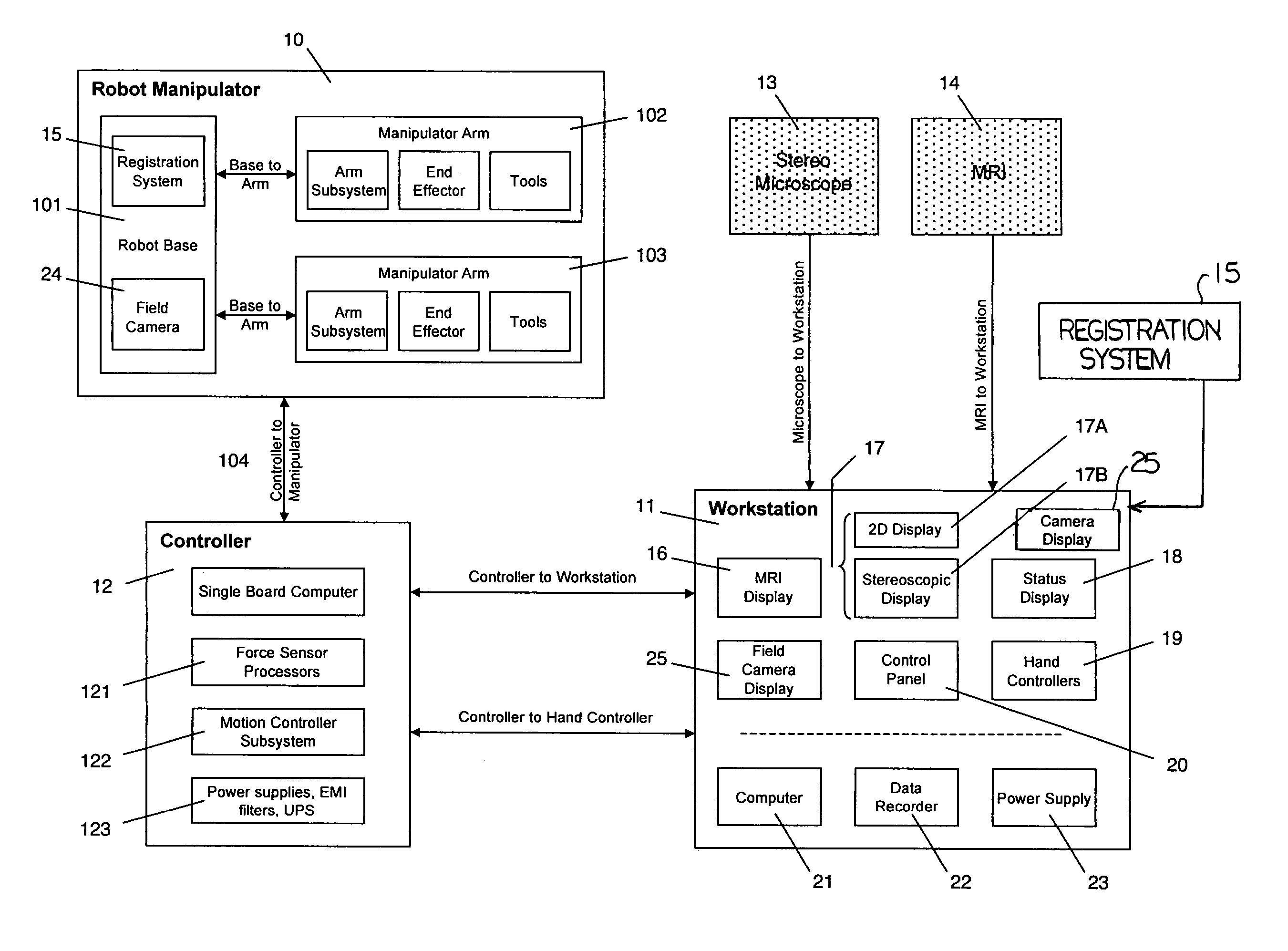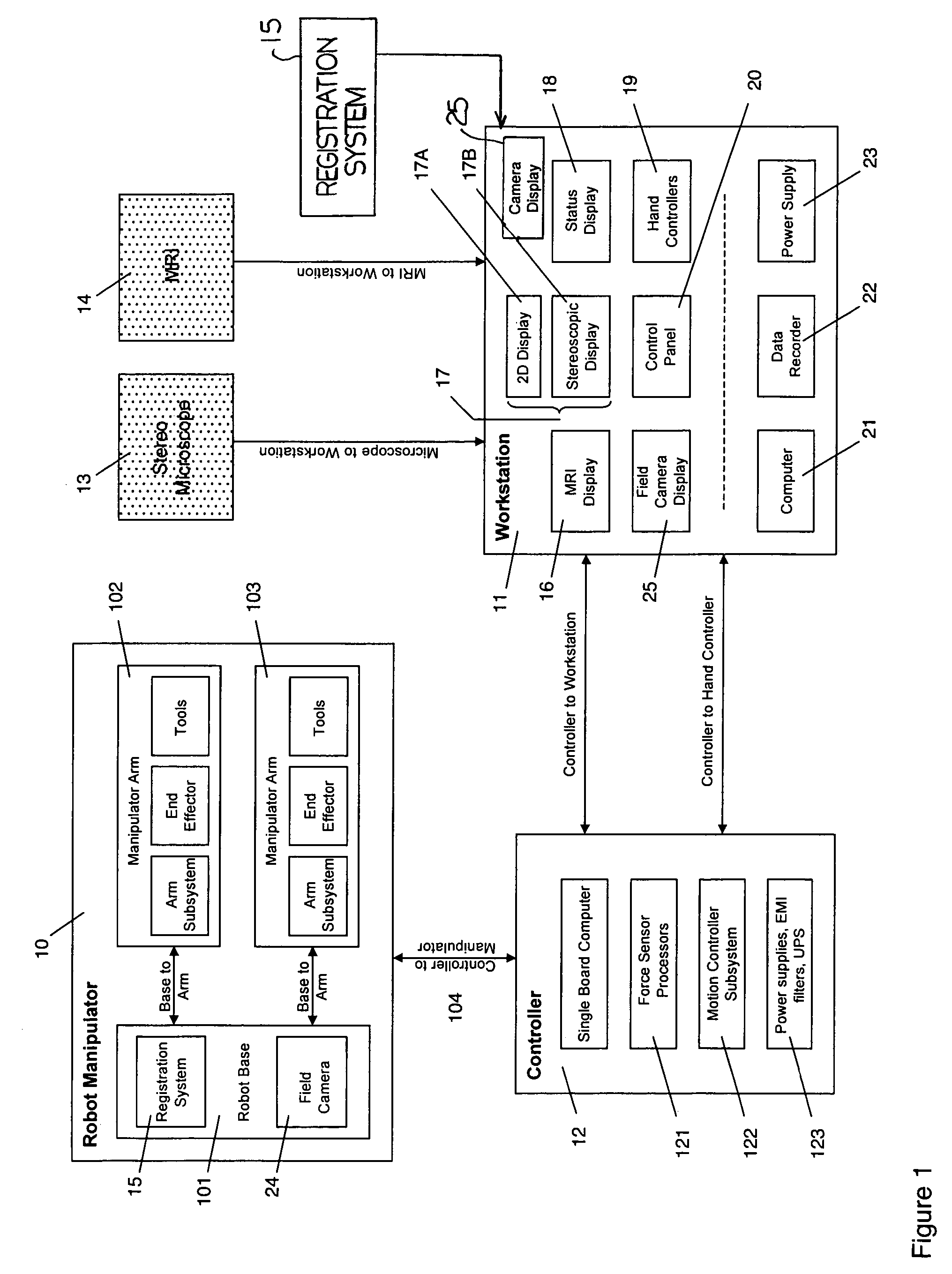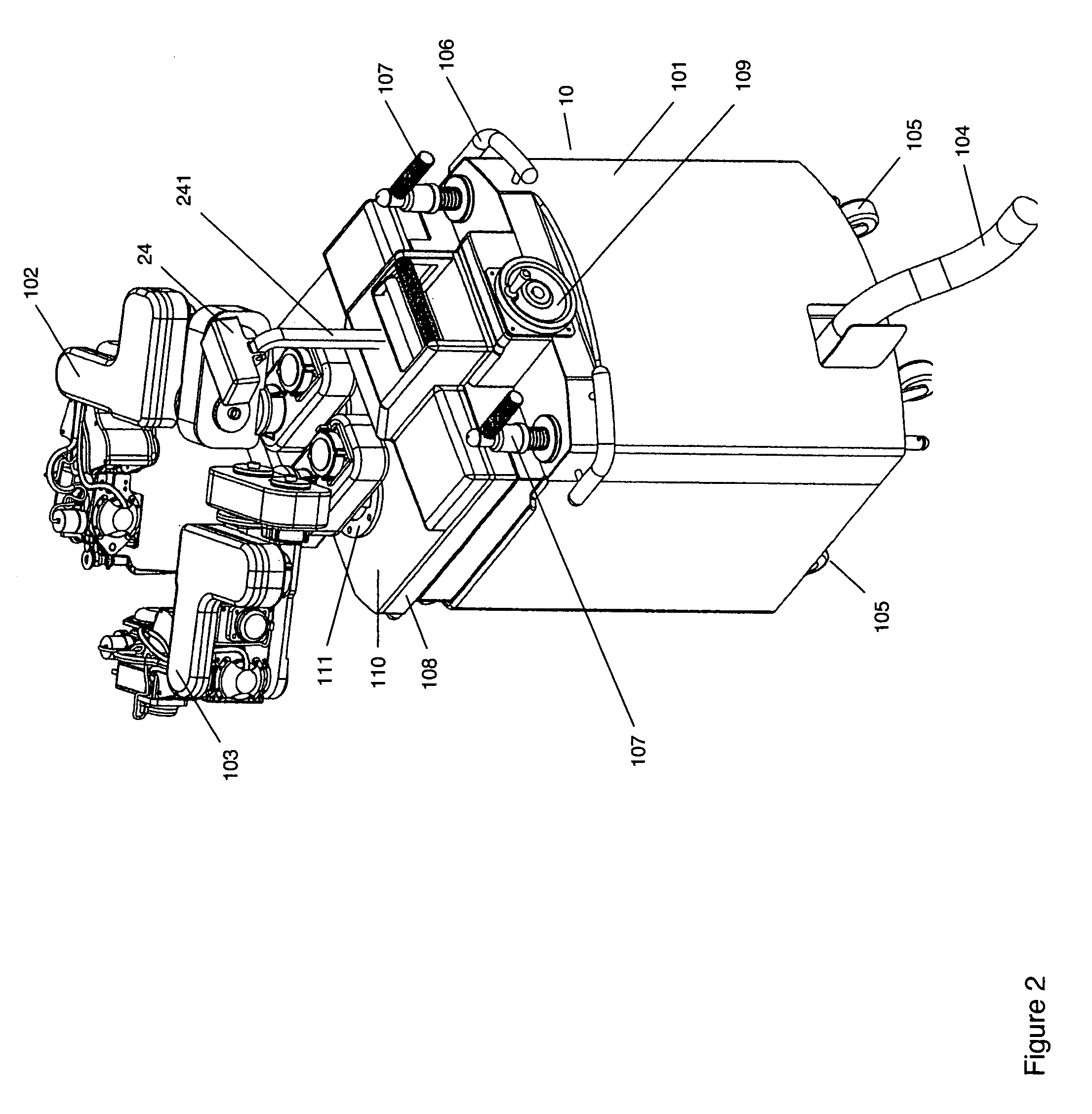Microsurgical robot system
a robot system and micro-scopy technology, applied in the field of micro-scopy robot systems, can solve the problems of limited surgical precision, difficult to achieve precise localization of brain pathology and neural structures, and surgeons currently have no effective way to use imri data to enhance surgical precision and dexterity, so as to facilitate safety and tool changing, the effect of reducing patient risk
- Summary
- Abstract
- Description
- Claims
- Application Information
AI Technical Summary
Benefits of technology
Problems solved by technology
Method used
Image
Examples
Embodiment Construction
[0092]Further details of the above generally described system are shown in the attached drawings 1 through 17.
[0093]An overview of the system is shown in FIG. 1 which comprises a robot manipulator 10, a work station 11 and a controller 12 which communicates between the robot manipulator and the work station. As inputs to the work station is also provided a stereo microscope 13, an MRI imaging system 14 and a registration system 15.
[0094]The work station includes a number of displays including at first display 16 for the MRI image, a second display 17 for the microscope image and a third display 18 for the system status. Further the work station includes two hand controllers schematically indicated at 19 and an input interface 20 allowing the surgeon to control the systems from the work station while reviewing the displays. The work station further includes a computer or processor 21, a data recording system 22 and a power supply 23.
[0095]The display 17 includes a stereoscopic displa...
PUM
 Login to View More
Login to View More Abstract
Description
Claims
Application Information
 Login to View More
Login to View More - R&D
- Intellectual Property
- Life Sciences
- Materials
- Tech Scout
- Unparalleled Data Quality
- Higher Quality Content
- 60% Fewer Hallucinations
Browse by: Latest US Patents, China's latest patents, Technical Efficacy Thesaurus, Application Domain, Technology Topic, Popular Technical Reports.
© 2025 PatSnap. All rights reserved.Legal|Privacy policy|Modern Slavery Act Transparency Statement|Sitemap|About US| Contact US: help@patsnap.com



